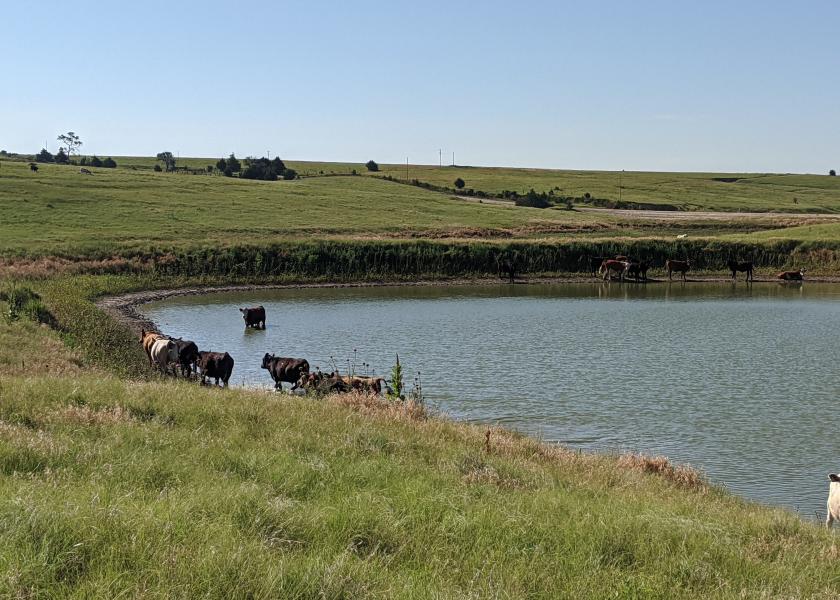WOTUS Rule and Producers: What You Need to Know

“We've had about 13 different regulatory definitions of WOTUS, and the rule that went into effect on Monday is just the latest example of that,” says Mary Thomas Hart, chief counsel of government affairs for the National Cattlemen’s Beef Association (NCBA).
While it may be one of many Waters of the United States (WOTUS) definitions, Hart joined AgriTalk host, Chip Flory, to discuss how producers should prepare their operations in reaction to the new WOTUS rule now in effect.
Hart best described WOTUS as “regulatory whiplash” and the Biden administration’s attempt to write a WOTUS definition that fits somewhere in the middle between the 2015 Obama rule and the 2020 Trump era Navigable Waters Protection rules.
“Unfortunately, in attempting to find middle ground, they got rid of a lot of the bright-lined definitions that made it easy to interpret ... what's in and what's out and what’s subject to federal jurisdiction,” Hart explains.
General features, such as those that carry water after it rains, as well as isolated features, which are far away from traditional navigable waters, are less defined, Hart says, and are going to require case by case determinations from regulators, which is not only time intensive but also costly.
Hart and NCBA believe regulation should be left to the states, limiting the federal government’s authority to only those features that actually contribute to downstream water quality, such as major waterways, the Great Lakes, oceans and other traditional navigable waters that contribute to interstate commerce.
So, What Does the New WOTUS Mean for Producers?
“My word of caution to landowners across the country is if you have a water infrastructure project or if you're planning to manipulate the movement of water on your land in any way, talk to somebody before you start,” Hart says.
Whether it be the local Soil and Water Conservation District or Natural Resources Conservation Service (NRCS), talk to somebody, have them look at the feature and have a conversation about what may be required, Hart adds.
Hart explains some producers got caught in a “pretty burdensome WOTUS definition” and “gotcha enforcement actions” under the Obama rule and were told they needed additional permitting in projects that would be considered very normal, such as building stock ponds and maintaining grass waterways.
Flory adds, “There are so many projects that are under construction right now that are part of an effort to provide cleaner water downstream. Unfortunately, the rule as it stands right now, could put those projects at risk.”
The new WOTUS rule may also discourage producers from starting new projects, Hart says, with the extra time and money needed to get a permit to carry out the project.
Producers “shouldn't have to go through all of that regulatory red tape to do something that's ultimately going to improve the natural resources in their land and in their community,” Hart adds. These could include projects such as a grass waterways that will improve overall water quality and stability for the water features long term.
While producers in 48 states are subject to the new Biden WOTUS rule, Idaho and Texas have been granted a preliminary injunction, which pauses the rule or puts the new definition on hold for litigation purposes.
Hart adds, Judge Brown, who granted the preliminary injunction, indicated he has a lot of issues with the Biden rule, which may bode well for litigation down the road. In addition, Zippy Duvall, president of the American Farm Bureau Federation, said Judge Brown recognized the new rule likely overstepped EPA’s authority under the Clean Water Act.
So, what are the likely next steps?
“Next steps certainly involve waiting for the Supreme Court to issue their decision on the Sackett versus EPA case,” Hart adds, regarding the lawsuit NCBA and its litigation partners filed in January of this year.
The Supreme Court’s decision could potentially limit the reach of the Clean Water Act, conflicting with Biden’s WOTUS rule.
Read More:
What Bodies of Water are Considered WOTUS?
WOTUS Rule Frozen in Two States, But Unimpaired in 48
Supreme Court to Hear WOTUS Arguments on Monday
EPA Releases New WOTUS Rule, with the Supreme Court Ruling Pending







